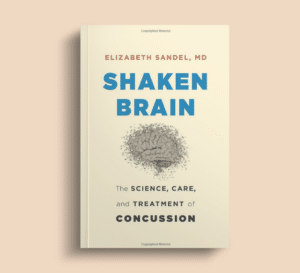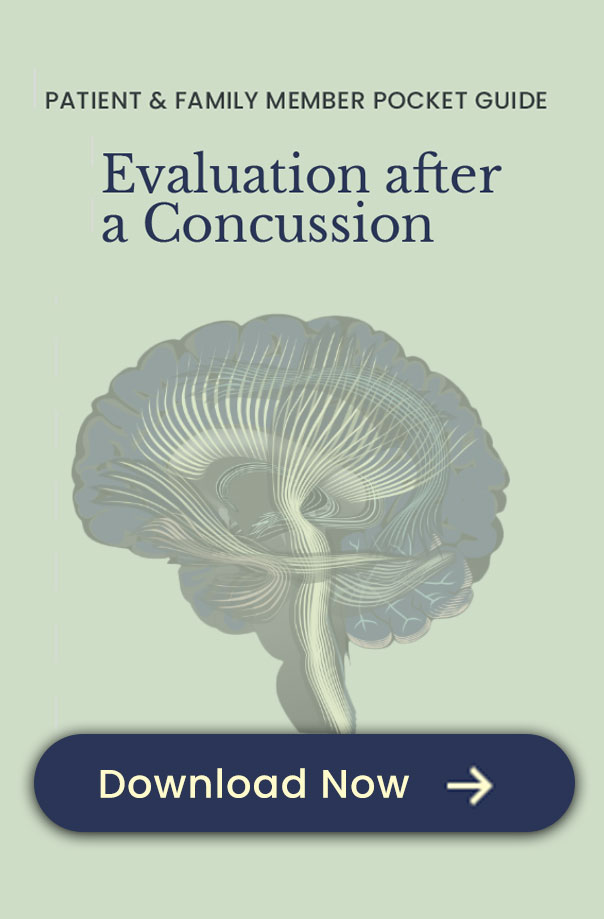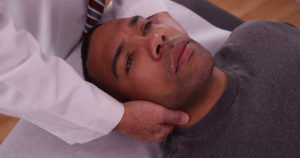Self-Reported Concussion Symptoms are Key to Evaluation & Diagnosis

March is Brain Injury Awareness Month: This Handy Concussion Checklist Can Help Your Doctor Help You
To properly diagnose a concussion and devise a treatment plan requires a thorough physician evaluation, a symptom checklist or an interview, or both, followed by a comprehensive cognitive and physical examination. While biomarkers — neuroimaging and laboratory studies — are not helpful in most concussion cases, a physical exam can identify symptom causes and treatment strategies. Readers can download a pocket guide for patients before being evaluated in the outpatient clinic or hospital emergency department.
Why Are Concussion Symptoms Important for Diagnosis?
People who have a concussion can experience a broad range in the type, number, and severity of symptoms. Initial symptoms are called “acute” and might include, for example, headache, dizziness, sensitivity to light and sound, difficulty concentrating or remembering, and sleep disturbances. In some cases, this must be an emergency evaluation if “red flags” (danger signs) indicate a more severe brain injury.
A medical evaluation and establishing a treatment plan based on symptoms and signs (findings on cognitive and physical examinations or other data) are necessary for those whose symptoms are not resolving quickly, even if there are no danger signs.
Checklists and Self-Reported Symptoms for Diagnosis
Checklists can identify symptoms after a concussion initially and in the weeks and months following the injury if symptoms persist. Some physicians prefer a narrative history-taking approach rather than a checklist, or they might use both methods to gather information.
You can download this pocket guide to help you prepare for a visit to your doctor.
I interviewed Dr. Mel Glenn, physical medicine and rehabilitation (PM&R) physician specializing in brain injury medicine at Harvard’s Spaulding Rehabilitation Center and Massachusetts General Hospital, about caring for people with persistent symptoms after a concussion.
Dr. Glenn and I discussed the difficulty in diagnosing the chronic condition referred to with terms such as “postconcussion syndrome” or “postconcussional disorder.” These are controversial terms because they can occur with other conditions. For example, headaches may be caused by a neck injury, or dizziness may be caused by a condition of the inner ear called benign paroxysmal positional vertigo (BPPV). Treatments vary depending on the diagnosis.
Are Brain Scans Used to Diagnose the Effects of a Concussion?
Brain scans such as CTs and MRIs aren’t usually helpful in evaluating post-concussion symptoms. Conventional imaging techniques are best at showing internal bleeding and physical damage to the skull and brain after more severe injuries and in the hours and days after an injury, not microscopic damage.
Still, some progress is being made in this area. Over the last few decades, researchers have been developing techniques to show changes in the brain after injury, including concussion, using more advanced neuro-imaging techniques. And laboratory biomarkers are also being tested to aid in diagnosis. (See Chapter 2: The Search for a Diagnosis, in Shaken Brain)
Treatment for Prolonged Post-Concussion Symptoms
Symptoms that do not resolve in about a month after a concussion are considered “chronic.” This does not mean that they will never resolve. It just means that it is vital to continue to have medical interventions and follow-ups from concussion experts.
A thorough post-concussion physical examination focuses on the neurologic and musculoskeletal systems and correlates with symptoms. For example, an assessment should include tests of thinking and memory, observation of eye movements, examination of the head and neck, and balance testing.
Effective treatment programs include certain medications and therapies along with education about self-care techniques, activities, exercise, and sleep hygiene. The treatment program should continue until symptoms resolve or can be effectively managed. (See more discussion in Chapter 3: Concussion Care, in my book, Shaken Brain)
Remember to watch my interview with Dr. Mel Glenn. You’ll find it right here.
You Might Also Like
The Post-Concussion Syndrome
Physiatrist Dr. Mel Glenn discusses the evaluation of the many symptoms that are part of a chronic condition called post-concussion syndrome or disorder that occurs in some patients after a concussion. He offers advice on the treatment of headaches, sleep disturbances, and other conditions.
Is Concussion a Diagnosis?
Clinicians like me say that concussion requires a clinical diagnosis based on the history of what happened to produce the symptoms. However, because these same symptoms appear in other conditions, and we don’t have reliable biomarkers, diagnosing a concussion can sometimes be a challenge. The lingering effects of a mild brain injury can also continue as a chronic condition, often referred to as post-concussion syndrome or persistent post-concussion symptoms, that still require treatment.
Treatment and Prognosis after a Concussion
Learn about treatments for post-concussion symptoms—including medication, various rehabilitation therapies, neuropsychology, and potentially some complementary therapies—as well as factors related to longer concussion recovery times.
Keep up to date
Get updates on the latest in concussion, brain health, and science-related tools from Dr. Elizabeth Sandel, M.D.
By clicking SIGN UP, you agree to receive emails from Dr. Sandel and agree to our terms of use and privacy policy.
Get the book!





